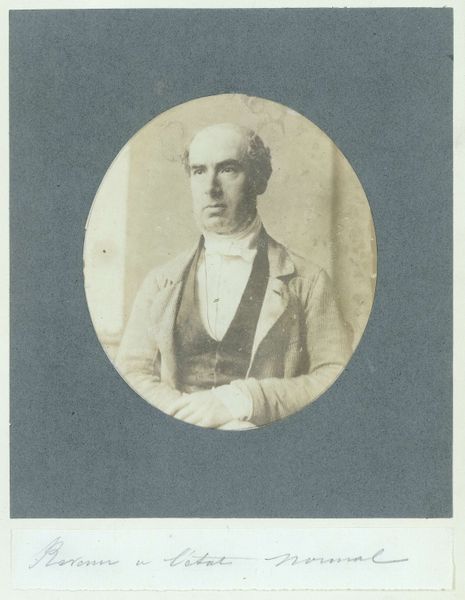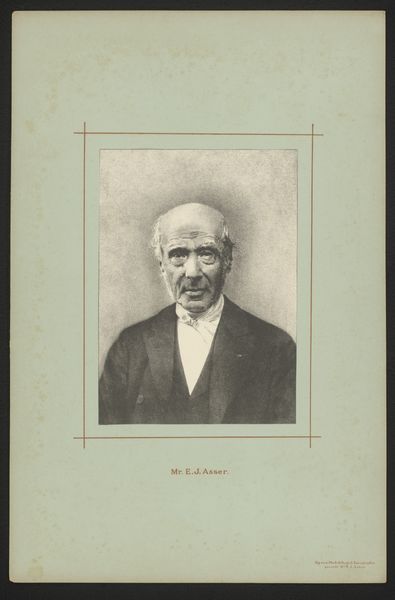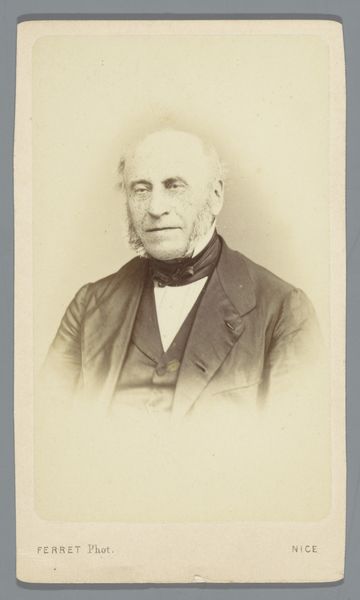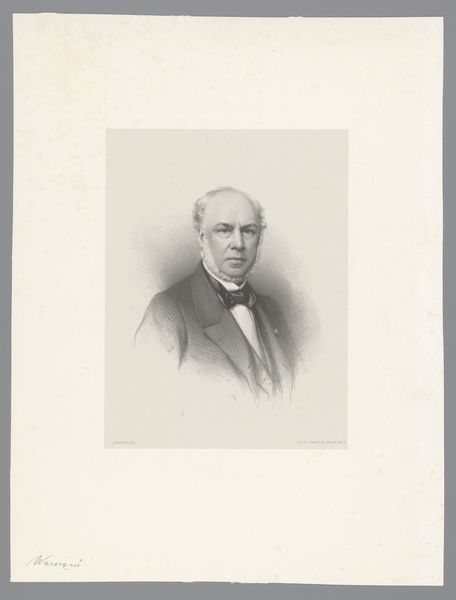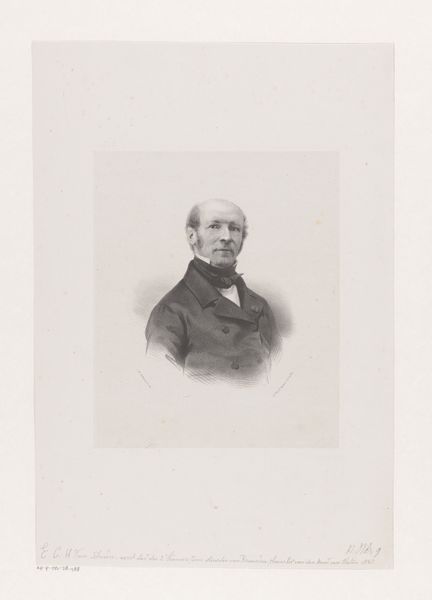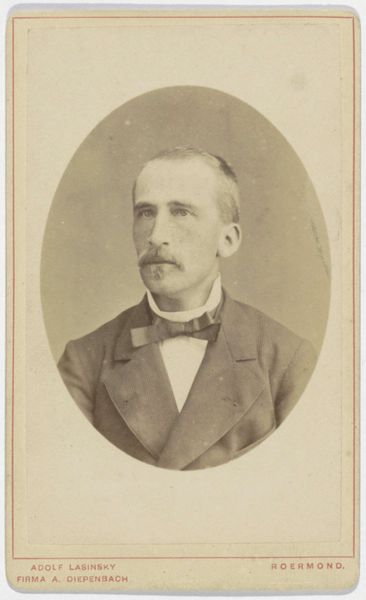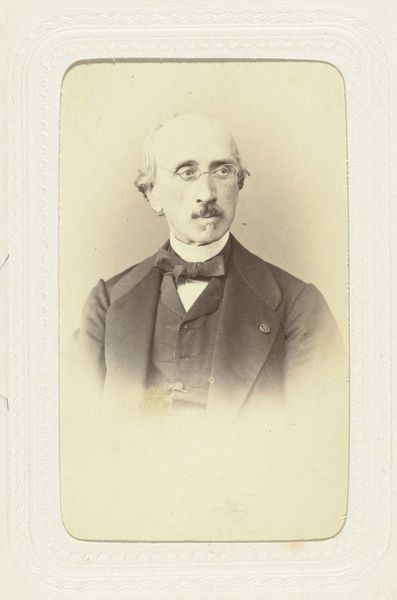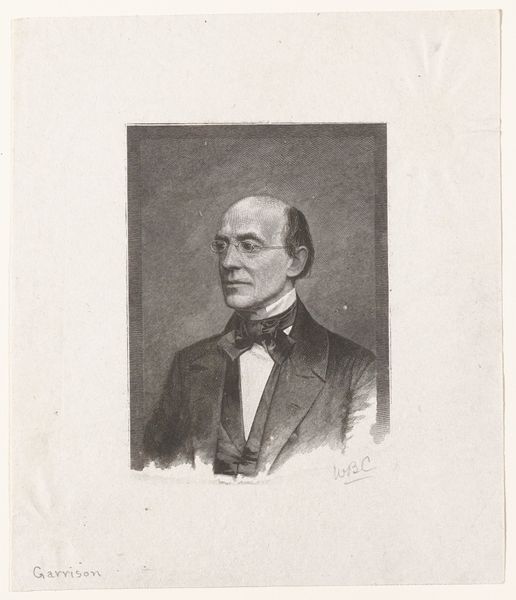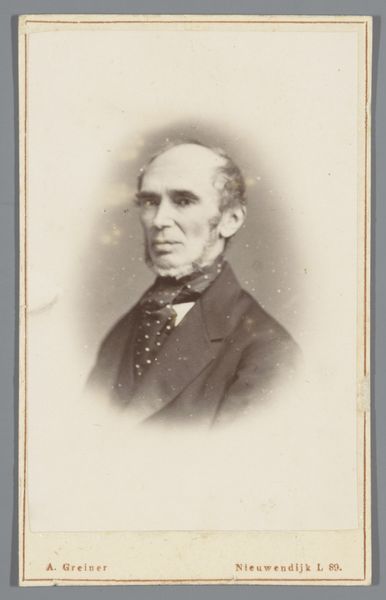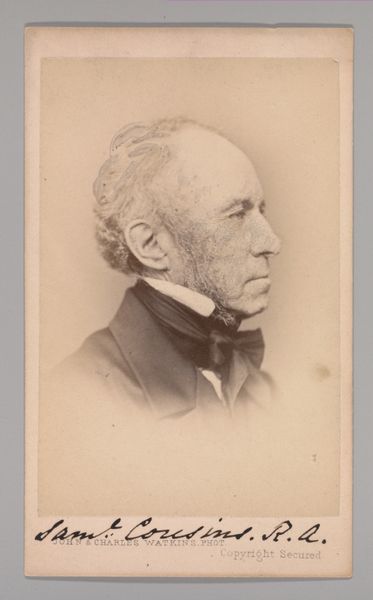
drawing, graphite
#
portrait
#
drawing
#
16_19th-century
#
self-portrait
#
caricature
#
pencil drawing
#
graphite
#
portrait drawing
#
academic-art
#
realism
Dimensions: height 180 mm, width 123 mm
Copyright: Rijks Museum: Open Domain
This is a self-portrait of Eduard Isaac Asser, made using lithography. This printing process involves drawing on a flat stone or metal plate with a greasy substance, then applying ink which adheres only to the drawn areas. The print is created by pressing paper against this prepared surface, allowing for detailed, repeatable images. The lithographic process allowed for mass production and consumption of images, which ties in with wider social issues of labor, politics, and consumption. Asser's choice of lithography reflects a democratization of art, moving away from unique, handcrafted artworks towards reproducible images, and speaks to the changing landscape of art production during the 19th century. The fine lines and tonal variations achieved through lithography, capture Asser’s likeness with remarkable precision, demonstrating both the capabilities of the medium and the artist's skill. Thinking about materials, making, and context helps us understand the full meaning of this artwork, challenging traditional distinctions between fine art and craft.
Comments
No comments
Be the first to comment and join the conversation on the ultimate creative platform.
